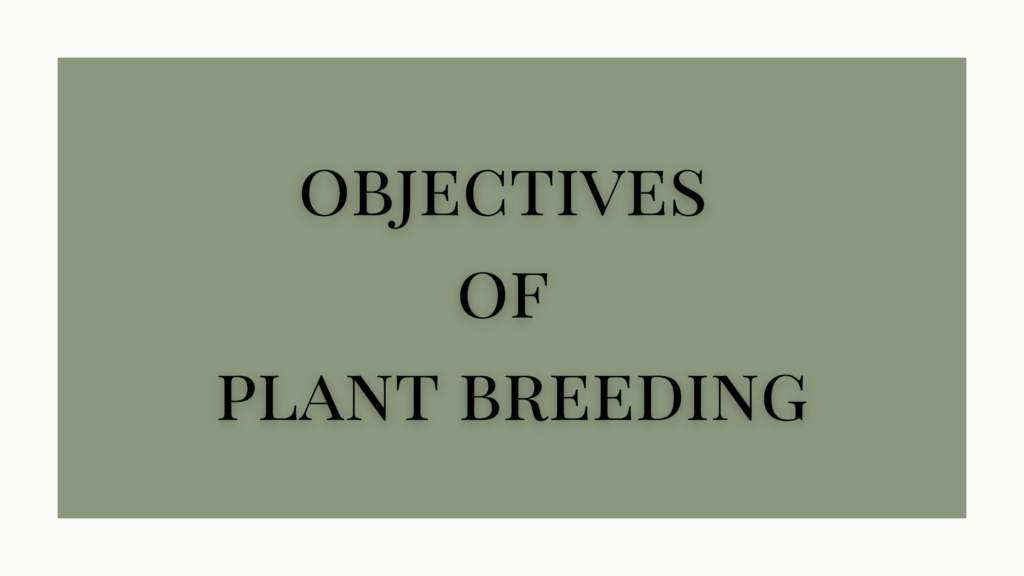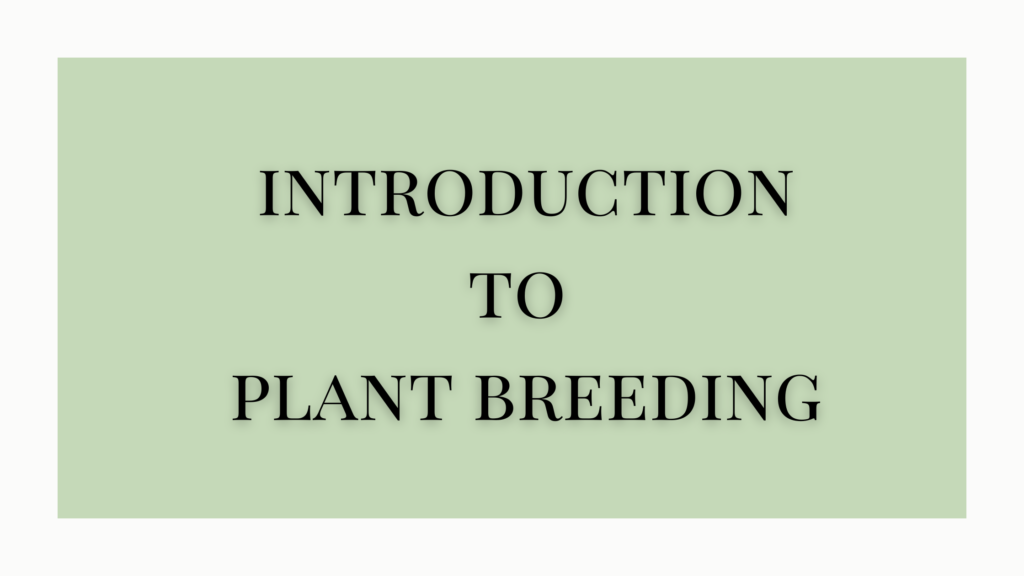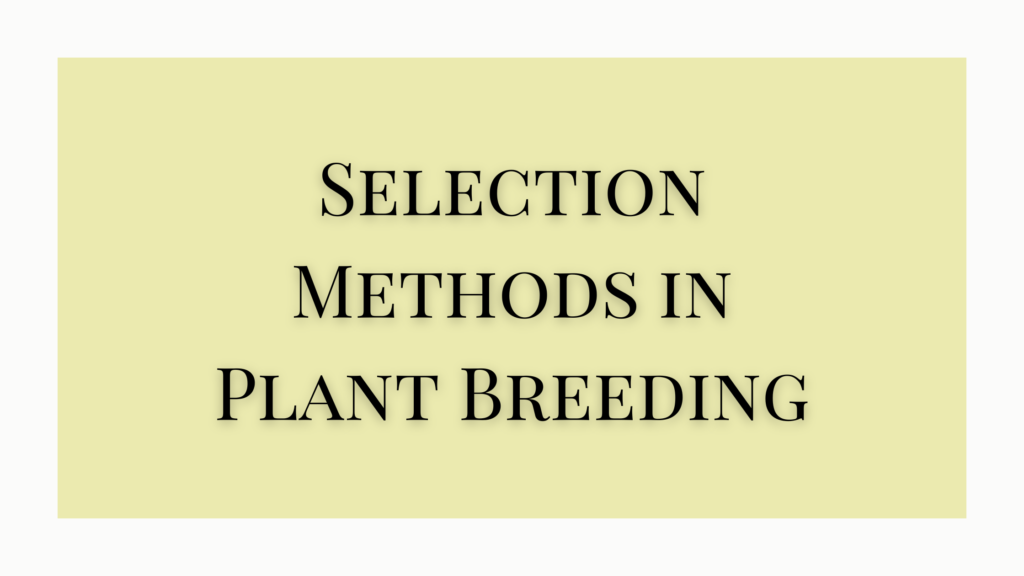The primary objective of plant breeding is to improve the characteristics of plants so that they are economically more desirable. The specific objectives would vary greatly depending on the crop under cultivation.
Objectives Of Plant Breeding
The main objectives are summarised below.
Higher Yields
Most plant breeding programs aim at higher crop yields. This is achieved by more efficient genotypes. Eg, Hybrid varieties of Maize (Zea mays), Sorghum bicolour, and Bajra (Pericitum americanum).
Improved Quality
The quality of products determines their suitability for various uses. Therefore, plant breeders seek high quality as an important aspect in plants. The quality of characters varies from one crop to another. E.g.. Grain size, color, milling, and baking quality in wheat (Triticum aestivum); cooking quality in rice; malting in barley (Hordeum vulgare); size, color, and flavor of fruits; keeping quality of vegetables; protein content of cereals and legumes, etc.
Disease and Insect Resistance
Resistant varieties offer the cheapest method of disease and insect control. In some cases, they offer only feasible means to control. Eg. Rust in wheat. Resistant varieties not only increase production but also stabilize the crops.
Change in Maturity Duration
Plant breeding allows new crop rotations, which helps extend the crop area. The development of wheat varieties suitable for late planting has permitted rice-wheat rotation. Plant breeding helps generate early maturing crop varieties or varieties that are suitable for planting on different dates or times.
Agronomic Characters
Modification of agronomic characteristics such as plant height, tillering ( prepare and use soil), branching, erect and trailing habits, etc, is often desirable. Eg. In cereals, dwarf plants are associated with resistance to lodging and response to fertilizers.

Photo Insensitivity
The development of photo-insensitive and temperature-insensitive wheat and photo-insensitive rice varieties have permitted cultivation in new areas.
Synchronous Maturity
Highly desirable in crops like moong and Vigna radiata– cowpeas, where several lickings are necessary.
Non Shattering Characteristics
It would be of great value in a crop like moong.
Determinate Growth
In plants like cotton, pulses, and pigeon peas, varieties having determinate growth are preferred over the normal varieties.
Dormancy
In some crops, seeds germinate even before harvesting if there are rains at the time of maturity. Eg. Vigna radiata, Cordium etc. Having a dormant period will reduce loss due to seed termination. However, removing dormancy would be convenient for other plants that require immediate planting.
Varieties for New Seasons
Most crops are seasonal, and it would be ideal to have varieties that grow in other seasons.
Moisture Stress and Salt Tolerance
The development of varieties for rain-fed areas and for saline salts would help increase crop production. A major proportion of crops in many parts are still under rain-fed conditions. Having suitable varieties will improve productivity in these areas.
Elimination of Toxic Substances
Some crops have toxic substances which must be eliminated to make them safe for consumption. E.g.. Lathyrus sativa seeds contain neurotoxins that can cause paralysis. Similarly, Brassica oil has crucic acid, which is harmful to human health. The removal of such toxic substances would increase the nutritive value of these crops.
Winter Hardiness
Eliminating winter hardiness would be ideal for certain crops under certain circumstances.
Crop Improvement Methods
Crop improvement has been achieved through several methods such as,
- Plant introduction and acclimatization
- Simple and honored methods of selection
- Hybridization
References
- Objectives of Plant Breeding. (n.d.). https://www.agriaddict.in/blog/objectives-of-Plant-Breeding
- http://www.eagri.org/eagri50/GBPR211/lec01.pdf
- B.D. Singh. Plant Breeding: Principles and Methods, (2022).




